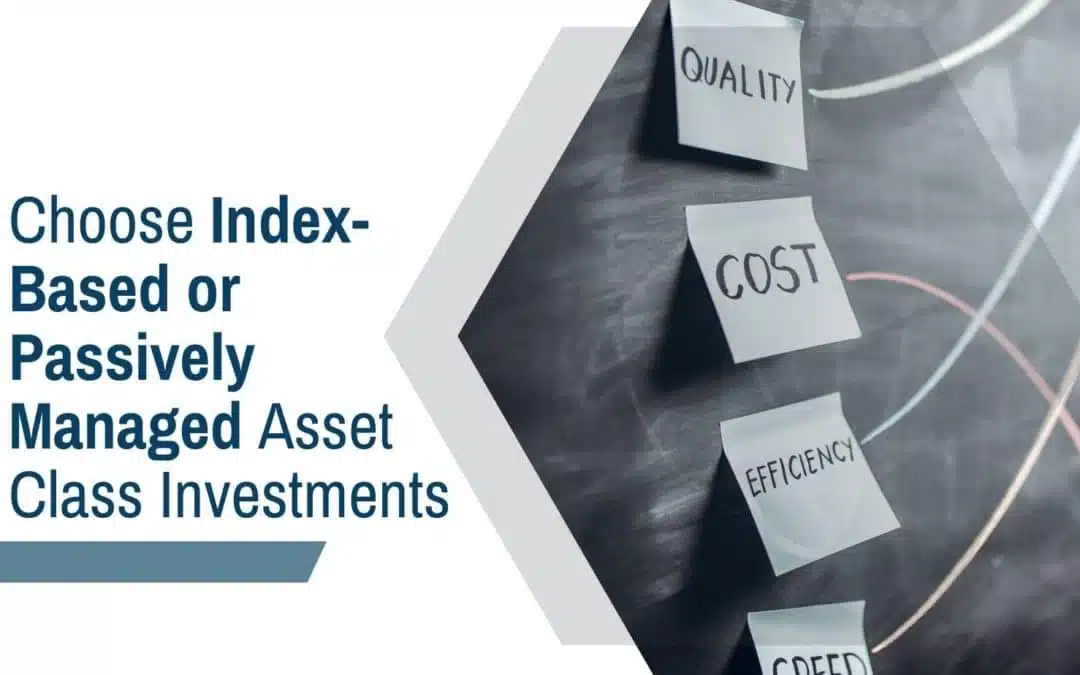the empowered investor
Why Diversified Investing Is the Hardest, Easiest Thing To Do
Investment Pitfall #4: Failing to Properly Diversify Your Investment Portfolio
Key Takeaways
- Everyone has heard the adage, “don’t put all your eggs in one basket.” In investing, that means diversifying your holdings, to avoid concentrating them in any one “basket.”
- Even though it’s easy to build a well-diversified portfolio out of today’s low-cost investment funds, we still see many investors having a hard time doing so.
- First, many investors think they’re well-diversified when they’re not. It’s not just the quantity of your investments that counts; the variety is just as important.
- Also, short-term market noise distracts investors from staying diversified over time.
- Even if you start out with a well-diversified portfolio, you’re far more likely to lose your way if you have no big-picture plan to guide your cohesive course.
- If we knew what the future held, we wouldn’t need to diversify our assets. But because uncertainty is a constant, we must diversify against life’s many surprises.
“ Anybody with $100 can buy a fully diversified portfolio.”
Don’t put all your eggs in one basket … The wisdom of diversification is older than the Toronto Stock Exchange by centuries1. With today’s array of low-cost investment funds, it’s also easy to implement. As Marcelo observed in our Failing to Diversify Properly podcast, almost anyone can invest in a well-diversified fund, even if they’re just getting started.
So why do we still see so many investors having a hard time following our easy advice about diversifying their investments? It’s a common investment pitfall we’ll cover today.
CAUGHT IN THE CONFUSION
If you’ve been following our blog, you’ve seen how poor portfolio diversification combines with other common pitfalls to thwart you from your personal financial goals. These include failing to have an investment philosophy, and instead trying to engage in market-timing and performance chasing based on flimsy forecasts.
Our aim in these Empowered Investor posts, and our The Empowered Investor book, is to help Canadian investors become more attuned to what these pitfalls look like, and how to defend against them. Today, let’s focus on how and why investors fail to diversify.
DIVERSIFICATION, DEFINED
Diversification is the process of allocating your capital to reduce overly concentrated exposure to particular companies, sectors, or similar sources of expected return (and their related risks).
In 1952, Nobel laureate Harry Markowitz published his groundbreaking Journal of Finance study, Portfolio Selection. In it, he described the logic of creating a diversified investment portfolio to capture long-term expected returns, rather than just randomly picking stocks. For the first time, he demonstrated how diversification could smooth out your investment ride, and potentially generate slightly higher rates of return over time.
No wonder empowered investors have been building diversified portfolios ever since.
Again, it goes back to not putting all your eggs in one basket, so you won’t lose everything if that basket drops. Although narrowly concentrated portfolios can occasionally pay off if you get lucky, the potential for loss far exceeds the possibility of gain.
Despite the logic behind diversification, we can think of at least three reasons why many investors still fail to properly implement it in their portfolios.
FALLING FOR FAKE DIVERSIFICATION
To begin with, many investors think they’re well-diversified when they’re not. It’s not just the quantity of your investments that counts; the variety is just as important. You may hold many securities, mutual funds, or ETFs. But your portfolio is not well-diversified if there is too much overlap among its holdings—such as if almost all of them are invested in large-company U.S./Canadian stocks, or are top-heavy in Canada’s hottest sectors such as banking or commodities.
True diversification occurs when you invest across different asset classes, sectors, geographies, and currencies. Each will react a little differently across different conditions. On the equity side, you want to have part of your portfolio in U.S. and Canadian companies, and other parts in international and maybe emerging markets. You want to hold a mix of companies that are small and large. You want to be invested in various industries, such as banking, as well as consumer products, technology, and so on. A diversified portfolio is also likely to contain diversified allocations to bonds (fixed income), and maybe REITs (real estate investment trusts).
FAVORING SHORT-TERM BETS OVER LONG-TERM INVESTMENTS
Another reason it’s hard to effectively diversify is because there are almost always enticing as well as frightening events going on in the markets. Both extremes distract us from simply diversifying, and sitting tight through all that near-term noise.
Nationally and regionally, we’ve seen popular themes rise and fall. In the early 2000s, Northern Telecom and Bombardier were popular investments in Montreal. In Calgary, we’d see tremendous concentrations in oil and gas around that period, while in Ottawa we would see investors with half their holdings in small-tech companies. In 2007, many Canadians were fleeing U.S. stock positions after a “lost decade” of underperformance, only to miss out on the abrupt and dramatic turning of that tide.
It’s tempting to overweight your portfolio with the latest popular attractions. The problem is, winning streaks only work for a while. Eventually they stop working—often dramatically and without warning. Only in retrospect can you see that a diversified portfolio would have been preferred for building more dependable wealth.
LOSING YOUR WAY
Even if you start out with a well-diversified portfolio, you’re far more likely to lose your way if there is no rhyme or reason to guide you on a cohesive course. Your returns may suffer over time, as you end up buying into high-priced popularity contests and selling into low-priced market scares. You’re also likely to end up more stressed and anxious about timing when to buy and sell various positions.
To combat this ongoing challenge, diversification is best paired with the other principles we’ve covered in our Empowered Investor posts. In particular, diversification provides the many pieces you’ll need to put together your unique financial “puzzle.” Ideally, you’ll fit these pieces into your portfolio’s grand scheme.
In our Failing to Diversify Properly podcast, Marcelo compares this sense of purpose to the artwork you may collect in your home. Each piece may be pleasing by itself. But you also want your body of art to tie together into a single statement. Likewise, the diversified pieces in your portfolio should come together as a unified whole.
DIVERSIFICATION: BECAUSE WE NEVER KNOW
A key takeaway? If we knew what the future held, we wouldn’t need to diversify against its surprises. We could just pile into the next best thing, and await the rewards. In reality, the future is unknown. As Nassim Taleb describes in The Black Swan, even our most ingrained assumptions about the ways of the world can become significantly wrong, all of a sudden.
Because uncertainty is a constant, we must diversify against it. So much so, that when Nobel laureate William Sharpe was asked what he thought should be the golden rules of investing, here was his reply:
“There is a rule in real estate that the three most important things are location, location, location. My rule in investments is that the three most important things are diversify, diversify, diversify.”
In our next post, we’ll take on one more common pitfall investors face, which is their own, behaviourally biased brain, and the tricks it plays on us. If you have questions or comments about what you’ve read so far, please reach out to us today. We’d love to hear from you!
Additional Reading:
- The Black Swan: Nassim Nicholas Taleb
- In Pursuit of the Perfect Portfolio: Andrew W. Lo and Stephen R. Foerster
- And, as always, our own book: The Empowered Investor
1 “In Pursuit of the Perfect Portfolio” authors described: “The common phrase ‘don’t put all your eggs in one basket’ is thought to have originated in the seventeenth century, but the notion of diversification dates back at least to the works of William Shakespeare and can even be found in the Bible.
More Winning Investment Principals

Investment Principal #4: Maximize Returns with Key Investment Factors
Discover how investment factors can help you maximize returns. Learn strategic factor investing to enhance your portfolio.

Investment Principal #3: Using Passive/Index Funds or ETFs
Index-based or passive asset class funds focus on how to reduce the costs and frictions involved in capturing the market’s generous expected returns over time.

Investment Principal #2: Diversify Your Asset Classes
The magic behind diversification is found in a financial measure known as correlation, or the degree to which two asset classes move in similar patterns.
Stay on top of your financial education
Subcribe and follow to get updates on important wealth management topics.

Connect
Visit Us
3535 St-Charles Blvd.
Suite 703
Kirkland, Quebec
H9H 5B9
Connect